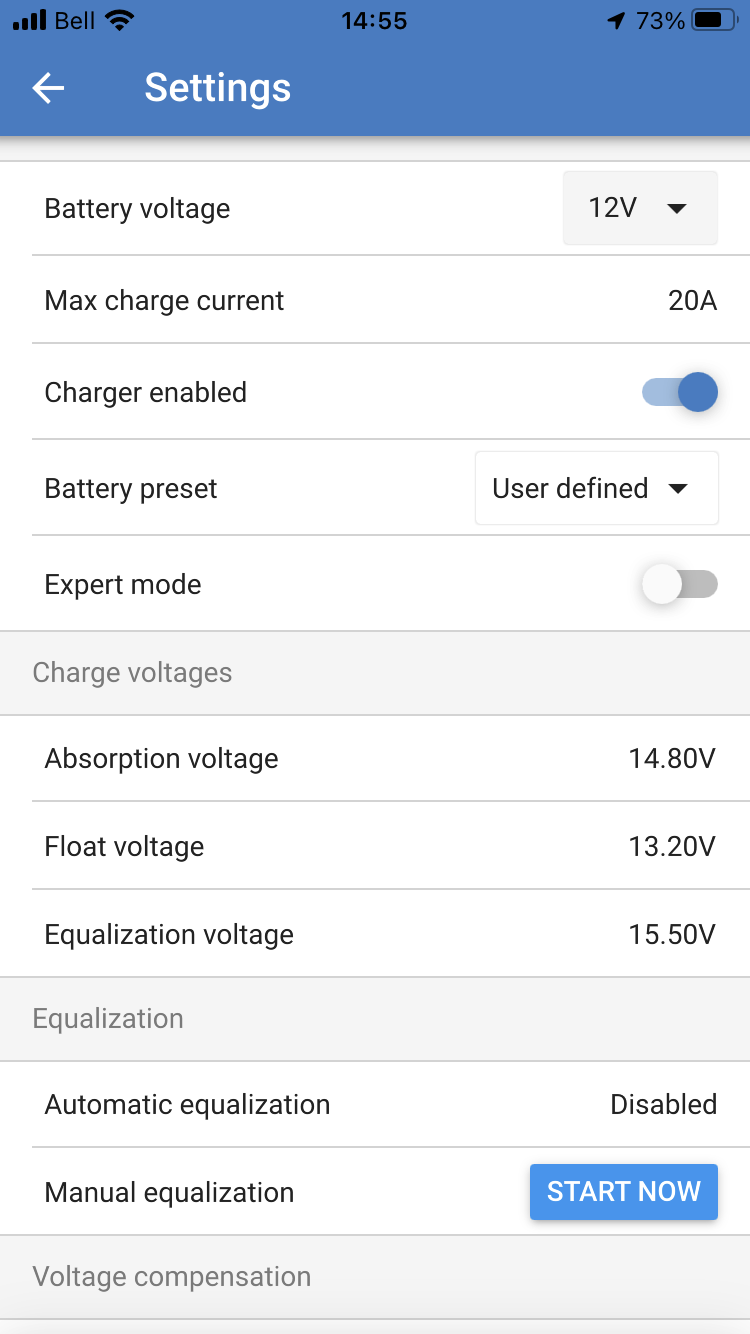Hello!
At Christmas, I purchased a 200W solar array (Renogy), a SmartSolar 100/20 MPPT and a SmartShunt for our RV. I am having a real challenge configuring the Shunt...it seems like a little bit of hocus pocus to me. I am currently bench-testing before installing in the trailer come the spring.
Battery specs: 12V Lead-Acid (maintenance-free w/ vents) 105aH. History is unknown, Suspect it has seen a few 0% draw-downs. Came to me used. Small battery/small trailer - when this batt is dead, plan to upgrade.
Notes: battery can be charged from shore power or off vehicle starter battery/alternator when installed in trailer
Question 1: Some people seem to think that the 'Charged Voltage' spec on the shunt should be 0.2 or 0.3 V below the Absorption charge (for solar applications) contrary to Victron's recommendation of 0.2 to 0.3V below Float voltage. Does this not start counting the SOC down early?
Question 2:: With a .77A load on the battery in full bright sunlight, the SmartShunt is starting to countdown the SOC. Charged voltage currently config'd to 12.9. If the solar/MPPT is harvesting enough energy (it very much is), to keep the battery charged, why is the shunt counting SOC down?
Question 3: Can someone confirm if there's a calculation for figuring out how much SOC is in the battery based on voltage UNDER LOAD...it seems that resting voltage and voltage under load are two different numbers and trying to get the capacity based on resting voltage is futility in a trailer (must be such-and-such-temperature for such-and-such time, etc.). I had the battery on around a 1amp 12V load overnight and my batt showed 12.17V (under load) in the morning...but the SOC showed 85%...there's a mismatch here. Just trying to figure out what I should set my voltage alarm to.
Forgive the novel here, but my google searches haven't yielded much luck.


